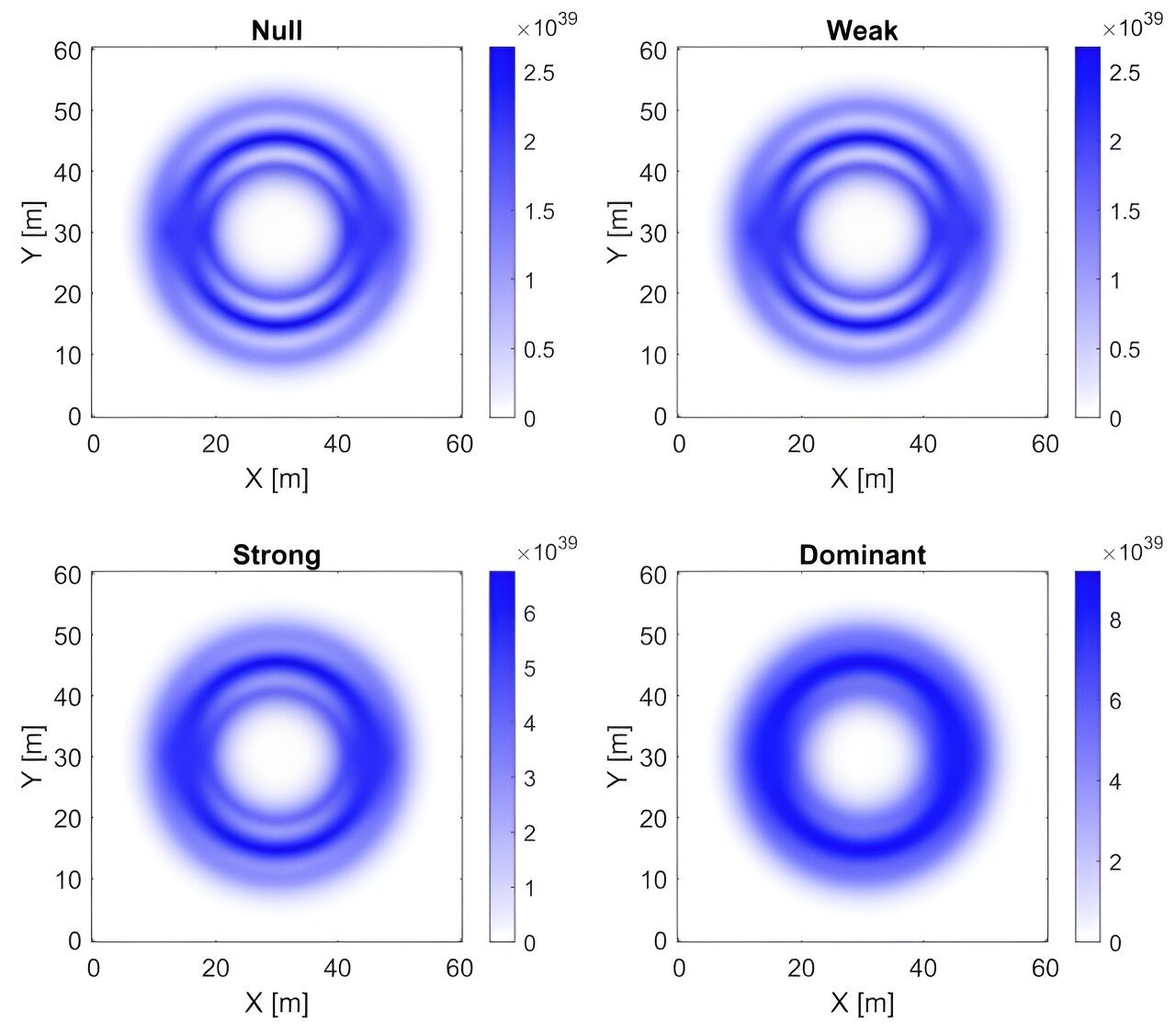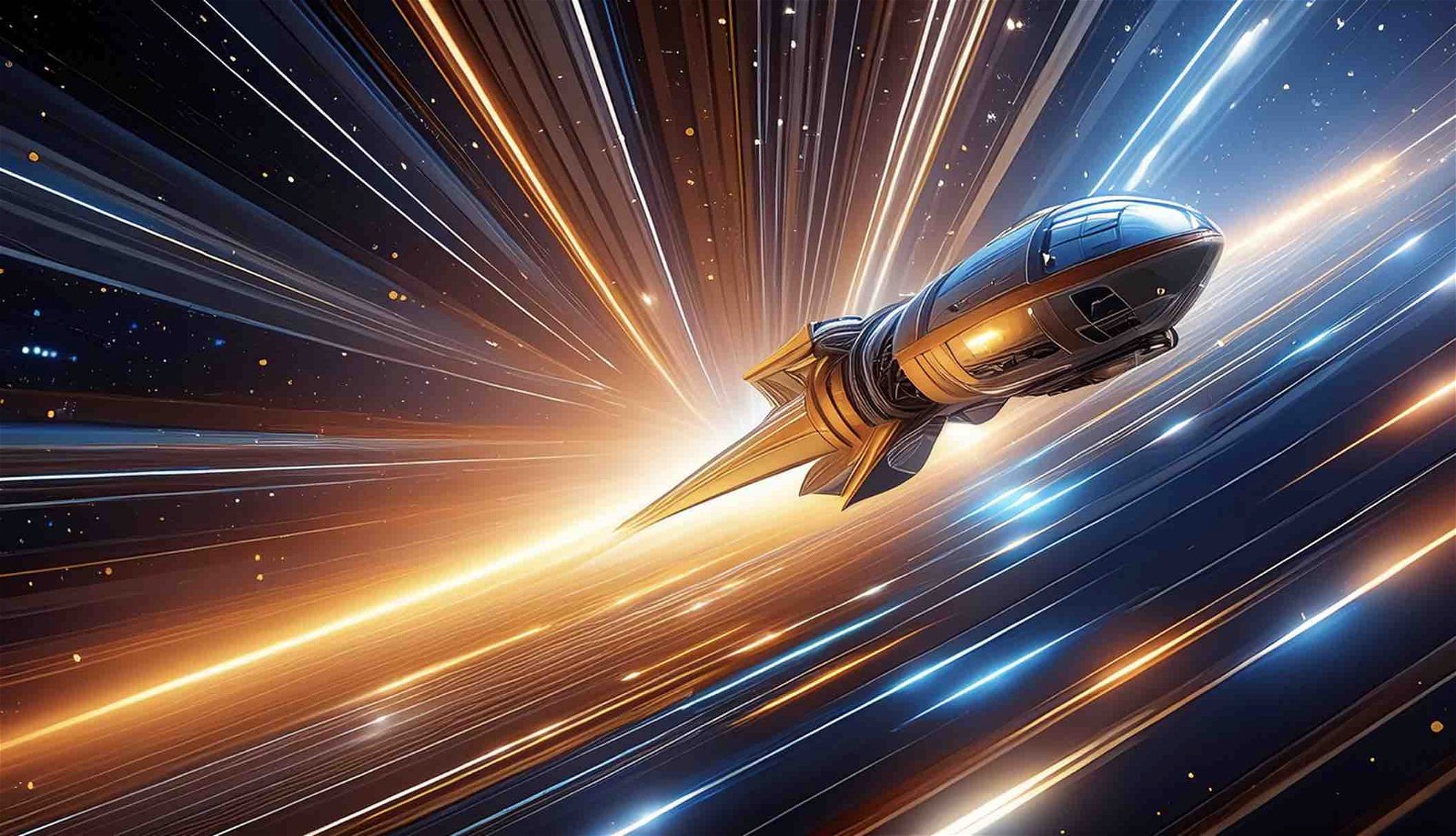A novel warp drive concept that can function without any need for hypothesized exotic or negative forms of energy has been unveiled in a groundbreaking new study by leading propulsion researchers.
Dubbed the “Constant-Velocity Subluminal Warp Drive,” the concept, developed by physicists with the Advanced Propulsion Laboratory at the New York-based think tank Applied Physics and from the University of Alabama in Huntsville, offers a theoretical new means of propulsion for space travel that conforms to general relativity, allowing it to operate at constant subluminal speeds with no need for unphysical forms of matter outlined in past concepts.
According to their new research, the physicists propose integrating a stable shell of ordinary matter with the shift vector of a warp drive similar to the famous “Alcubierre drive” first proposed decades ago. This would allow a “warp bubble” to be achieved that will allow the movement of objects very rapidly through space within the bounds of light speed.
Warp Speed Ahead
In 1994, theoretical physicist Miguel Alcubierre initially proposed a warp drive concept in which faster-than-light travel could be effectively achieved by contracting space in front of a spacecraft and expanding it behind the vehicle, as opposed to propelling the craft through physical space using traditional means of propulsion. Under these circumstances, Alcubierre envisioned that a configurable energy-density field lower than vacuum could be generated, providing a means of space travel in alignment with Einstein’s field equations.
Three years ago, researchers with Applied Physics first reported that a warp drive requiring no exotic matter could be constructed, telling The Debrief that their design was constrained by Newtonian physics and that reports claiming it could exceed light speed were inaccurate.
“We show that a class of subluminal, spherically symmetric warp drive spacetimes, can be constructed based on the physical principles known to humanity today,” said Gianni Martire, the CEO and co-founder of Applied Physics, in a 2021 email to The Debrief.
In April, Applied Physics officially unveiled its Warp Factory analysis tool. In a statement provided to The Debrief, Dr. Christopher Helmerich, one of the co-authors of the new paper published in Classical and Quantum Gravity, said the toll “serves as a reality check for warp drive designs,” allowing researchers to analyze designs “in a comprehensive and automated manner” that allows the identification of unphysical characteristics with greater efficiency.
“This means we can steer the development of warp drive technology toward designs that can, hopefully, be built and operated in the future,” Helmerich told The Debrief in April.
Now, the team says its latest work represents a new milestone in the path toward making warp drive concepts a reality.
“This breakthrough represents the first numerical implementation of physical warp drives, made possible using the Warp Factory analysis tool developed at Applied Physics,” reads a statement on the think tank’s official website.
Aligning With the Alcubierre Metric
In their new paper, the Applied Physics team presents what they characterize as “the first constant velocity subluminal physical warp drive solution to date that is fully consistent with the geodesic transport properties of the Alcubierre metric.” Significantly, the team’s theoretical warp drive concept can facilitate the geodesic transport of observers while satisfying several energy conditions outlined in their paper.


“This solution was constructed from a stable shell of matter with a modified shift vector on its interior,” the team writes, which they say allowed the creation of a warp solution possessing positive ADM mass—a quantity that refers to the concept of mass as seen in faraway regions—noting that the Warp Factory toolkit was employed for analysis and construction of the shell.
“This exciting new result offers an important first step toward understanding what makes physical warp solutions,” the team writes, adding that the new warp drive solution they have produced “shows that a more generic constant velocity warp drive spacetime can be constructed that satisfies the energy conditions.”
Going forward, the team says they plan to explore further possibilities involving their novel solution, optimizing and improving their theoretical framework to ensure that all the physical conditions required are met. They will also focus on “the question of accelerating the drive efficiently without breaking physicality,” which represents a significant factor in current research involving prospective warp drive technologies.
While the concepts outlined in the team’s new paper pave the way toward making travel through space nearing light speed a reality, constructing such an engine is likely something that will only be feasible far in the future, as the present state of technology would not allow for such a device.
For now, the warp drive concept remains a fascinating reality only in the fictional universes of Star Trek, although some intriguing observations from over the decades could hint at the possibility that such capabilities might already exist, perhaps within the technological toolkit of other advanced civilizations whose capabilities far exceed those of humans. While such possibilities remain entirely speculative for now, the work being undertaken by Applied Physics is bringing those concepts closer to becoming a reality for humans that, one day, may be capable of carrying future crewed missions to the furthest reaches of the final frontier.
“Although this design requires significant energy, it demonstrates that warp effects can be achieved using conventional matter while adhering to known energy constraints,” the Applied Physics team says of the new warp drive solution on its website.
“Applied Physics continues to make progress as humanity embarks on the Warp Age.”
The team’s new paper by Jared Fuchs et al, entitled “Constant velocity physical warp drive solution,” was published last month in Classical and Quantum Gravity. An earlier preprint version of the paper can be read in its entirety on arXiv.org.
Micah Hanks is the Editor-in-Chief and Co-Founder of The Debrief. He can be reached by email at micah@thedebrief.org. Follow his work at micahhanks.com and on X: @MicahHanks.

